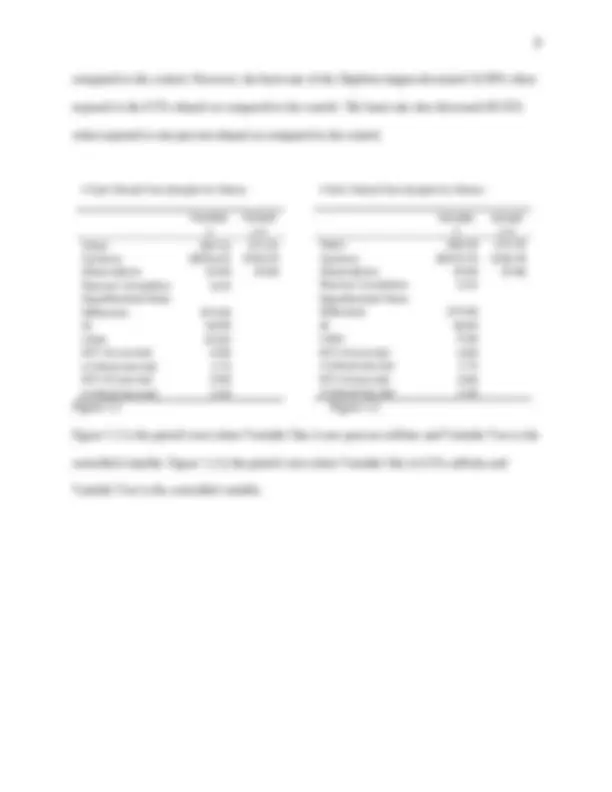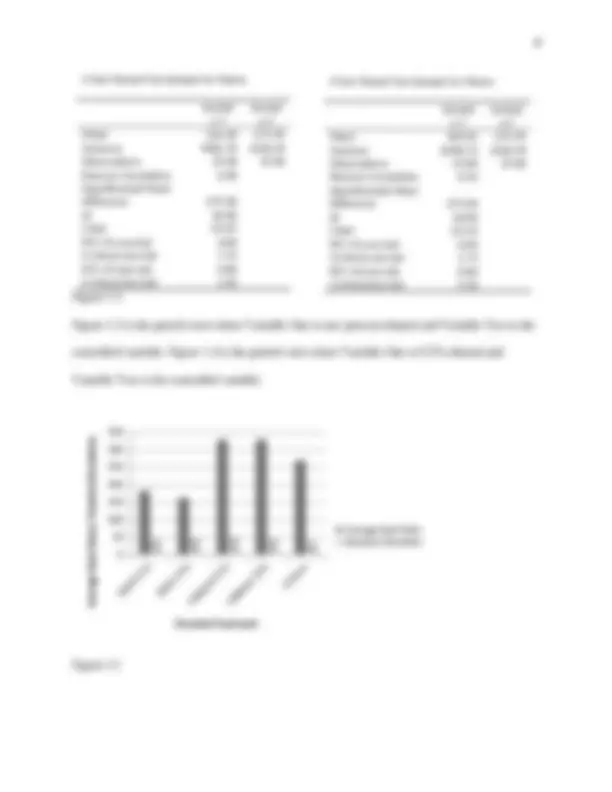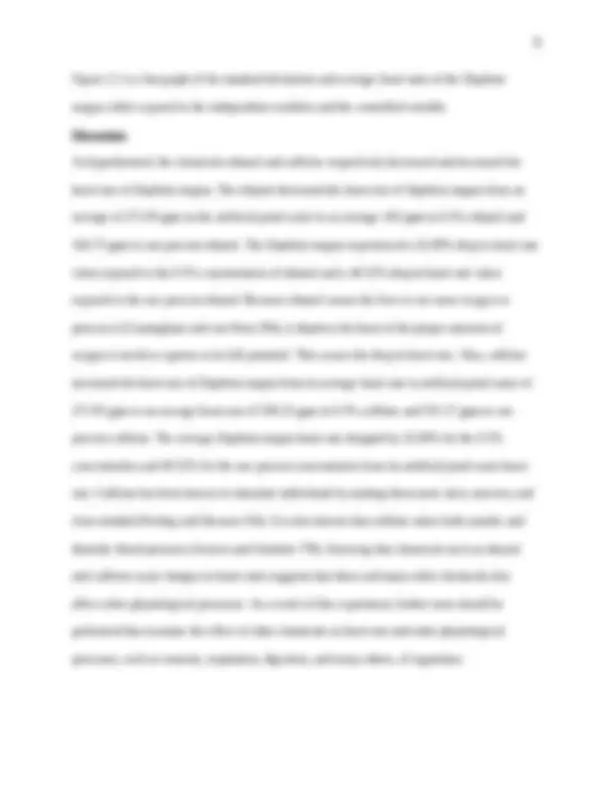





Study with the several resources on Docsity

Earn points by helping other students or get them with a premium plan


Prepare for your exams
Study with the several resources on Docsity

Earn points to download
Earn points by helping other students or get them with a premium plan
Community
Ask the community for help and clear up your study doubts
Discover the best universities in your country according to Docsity users
Free resources
Download our free guides on studying techniques, anxiety management strategies, and thesis advice from Docsity tutors
Material Type: Paper; Class: Biology 1 - Introduction; Subject: Biology / Biological Sciences; University: Shippensburg University of Pennsylvania; Term: Forever 1989;
Typology: Papers
1 / 6

This page cannot be seen from the preview
Don't miss anything!




Section 3 Dr. Pablo Delis Student Name 10/19/
Student Name, Partners Introduction Daphnia magna are small, planktonic crustaceans between 0.2 and five mm long. They are members of the Cladoceran order. They are known as water fleas because of their saltatory swimming style. They live in a range of aquatic environments varying from acidic swamps to any body of freshwater. Daphnia magna are commonly described as organisms that are well adapted to extreme habitats due to their short life cycle and the ability to produce protective eggs in anticipation of environmental deterioration (Slusarczyk, 2009). The significance of the topic is to observe the effect that chemicals have on physiological processes. The purpose of the experiment in this lab is to research and observe the effects that two chemicals, caffeine and ethanol, will have on Daphnia magna. In this experiment, I hypothesized that the ethanol would decrease the heart rate of the Daphnia magna. I also hypothesized that the caffeine would increase the heart rate of Daphnia magna. Observing the effects of the chemicals on the heart rate of Daphnia magna help determine the effects of chemicals on physiological processes. Materials and Methods The procedure followed the directions of the Principles of Biology 1 Laboratory Manual (Castle and Paulson 12). The experiment was conducted by obtaining an average heart rate of the
Daphnia magna before they were exposed to ethanol or caffeine. We then observed the effect of two different concentrations of both ethanol and caffeine on the heart rate of the Daphnia magna. The Daphnia magna were obtained from a sample of pond water. The two different concentrations were 0.5% and 1% of both ethanol and caffeine. The size of the Daphnia magna experimented upon was 0.91 mm_._ The controlled variable used was artificial pond water. The independent variable of the experiment was the caffeine and ethanol. The dependent variable was the heart rate of the Daphnia magna. The depression slide was used to observe the Daphnia magna underneath the microscope without being crushed and killed. The compound microscope was used to observe the Daphnia magna and record their heart rate. The pipet was used to procure samples of Daphnia magna. The experiment took place at 7:00 PM in a 23.9 degree Celsius laboratory. The statistical method used to analyze the data is the paired t-test. Results The Daphnia magna exposed to the artificial pond water produced an average heart rate of 271.95 ppm. When exposed to 0.5% caffeine, the average heart rate of the Daphnia magna increased to 330.25 ppm. When exposed to one percent caffeine, the average heart rate of Daphnia magna increased further to 331.17 ppm. After being exposed to 0.5% ethanol, the heart rate of the Daphnia magna dropped to 185 ppm. After being exposed to one percent ethanol, the heart rate of the Daphnia magna dropped further to 164.75 ppm. The Daphnia magna had an 11% decrease in heart rate when exposed to the one percent ethanol as compared to the 0.5% ethanol. The Daphnia magna also experienced less than a 0.01% increase in heart rate when exposed to one percent caffeine as compared to 0.5% caffeine. The heart rate of the Daphnia magna increased 18.77% when exposed to 0.5% caffeine as compared to the control, or artificial pond water. The heart rate also increased 18.99% when exposed to one percent caffeine as
t-Test: Paired Two Sample for Means Variabl e 1 Variabl e 2 Mean 126.58 271. Variance 9902.70 1558. Observations 19.00 19. Pearson Correlation 0. Hypothesized Mean Difference 275. df 18. t Stat -19. P(T<=t) one-tail 0. t Critical one-tail 1. P(T<=t) two-tail 0. t Critical two-tail 2. Figure 1. Figure 1.3 is the paired t-test where Variable One is one percent ethanol and Variable Two is the controlled variable. Figure 1.4 is the paired t-test where Variable One is 0.5% ethanol and Variable Two is the controlled variable. EtOH 0.5% EtOH 1.0% Caffeine 0.5% Caffeine 1.0% Control 0 50 100 150 200 250 300 350 Average Heart Rate Standard Deviatiion Chemical Treatment Average Heart Rates/ Standard Deviations Figure 2. t-Test: Paired Two Sample for Means Variabl e 1 Variabl e 2 Mean 104.05 271. Variance 8298.72 1558. Observations 19.00 19. Pearson Correlation 0. Hypothesized Mean Difference 275. df 18. t Stat -22. P(T<=t) one-tail 0. t Critical one-tail 1. P(T<=t) two-tail 0. t Critical two-tail 2.
Figure 2.1 is a bar graph of the standard deviations and average heart rates of the Daphnia magna while exposed to the independent variables and the controlled variable. Discussion As hypothesized, the chemicals ethanol and caffeine respectively decreased and increased the heart rate of Daphnia magna. The ethanol decreased the heart rate of Daphnia magna from an average of 271.95 ppm in the artificial pond water to an average 185 ppm in 0.5% ethanol and 164.75 ppm in one percent ethanol. The Daphnia magna experienced a 32.09% drop in heart rate when exposed to the 0.5% concentration of ethanol and a 40.52% drop in heart rate when exposed to the one percent ethanol. Because ethanol causes the liver to use more oxygen to process it (Cunningham and van Horn 294), it deprives the heart of the proper amounts of oxygen it needs to operate at its full potential. This causes the drop in heart rate. Also, caffeine increased the heart rate of Daphnia magna from its average heart rate in artificial pond water of 271.95 ppm to an average heart rate of 330.25 ppm in 0.5% caffeine and 331.17 ppm in one percent caffeine. The average Daphnia magna heart rate dropped by 32.09% for the 0.5% concentration and 40.52% for the one percent concentration from its artificial pond water heart rate. Caffeine has been known to stimulate individuals by making them more alert, anxious, and clear minded (Peeling and Dawson 334). It is also known that caffeine raises both systolic and diastolic blood pressure (Arciero and Ormsbee 759). Knowing that chemicals such as ethanol and caffeine cause changes in heart rates suggests that these and many other chemicals also affect other physiological processes. As a result of this experiment, further tests should be performed that examine the effect of other chemicals on heart rate and other physiological processes, such as osmosis, respiration, digestion, and many others, of organisms.